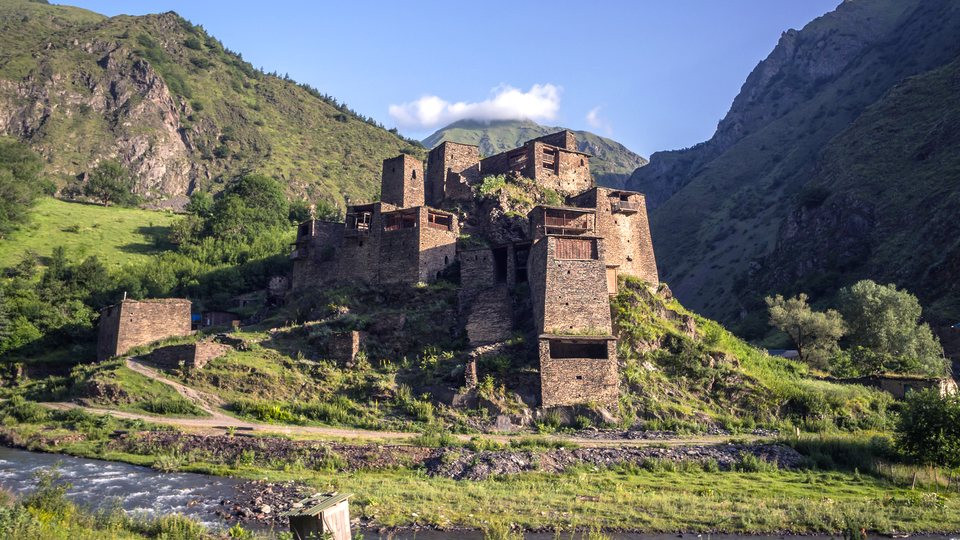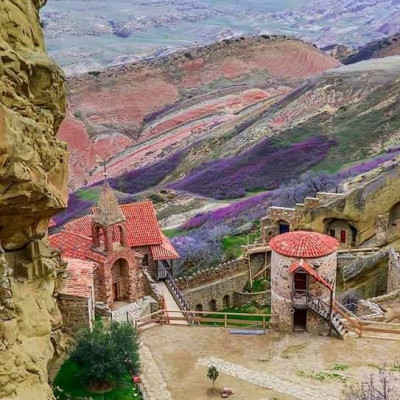
Nestled in the rugged mountains of northeastern Georgia, the village of Shatili is a remarkable testament to human resilience and architectural ingenuity. Known primarily for its fortified stone towers, Shatili stands as a living museum where history breathes through every wall, pathway, and rooftop. These towers, constructed from stone and mortar, rise dramatically from the steep cliffs, forming a labyrinthine structure that blends seamlessly into the natural landscape. Dating back to the 16th century, the Shatili towers were designed as both residential spaces and defensive fortresses. Families would live within the towers for generations, and during times of conflict, they could retreat higher into the fortress for safety. The interconnected towers are a marvel of medieval engineering, with narrow corridors, hidden stairways, and secret passages allowing residents to move safely even during attacks. Shatili’s strategic location near the Georgian-Chechen border meant that these towers were essential for protecting the local population from invasions and raids over the centuries. Each tower is unique in design, reflecting the practical needs and aesthetic sensibilities of the families who built them. Despite centuries of harsh weather, earthquakes, and occasional attacks, many of the towers remain remarkably intact, offering visitors a vivid glimpse into Georgia’s feudal past. The towers were not merely defensive structures but also a center of community life. Within their walls, residents stored food, raised animals, and even practiced traditional crafts. The tight-knit design promoted a sense of solidarity among the villagers, where neighbors depended on each other for survival and shared the responsibilities of maintaining the towers. Walking through Shatili today, one can feel the pulse of history. The towers stand silent yet eloquent, whispering stories of bravery, endurance, and daily life in one of Georgia’s most isolated regions. Local guides often recount legends and historical tales, bringing the stones to life with narratives of warriors, shepherds, and families who once called Shatili home. Beyond its historical and architectural significance, Shatili captivates with its natural beauty. The village is surrounded by towering peaks, deep gorges, and flowing mountain rivers that enhance the sense of timelessness. In winter, the snow-covered towers look like a scene from a fairy tale, while in summer, the green terraces and wildflowers contrast sharply with the ancient stone walls. Tourism in Shatili has grown steadily in recent years, as travelers from around the world seek to experience authentic Georgian culture and history. Visiting the towers requires both respect and curiosity, as the structures are fragile and must be preserved for future generations. Travelers often combine a tour of the towers with hikes in the surrounding mountains, exploring hidden valleys, ancient trails, and small chapels scattered throughout the region. For historians, architects, and adventurers alike, Shatili offers an unparalleled journey into the past. The village is not just a collection of stone buildings but a living symbol of Georgia’s resilience and the enduring spirit of its people. Preserving Shatili and its towers is a shared responsibility, as they represent a unique heritage that connects modern Georgia to its medieval roots. Whether you are drawn by history, architecture, or the breathtaking landscape, the towers of Shatili invite you to step into a world where the past lives alongside the present, and every stone tells a story of survival, community, and culture.






 Deutsch
Deutsch
 русский
русский
